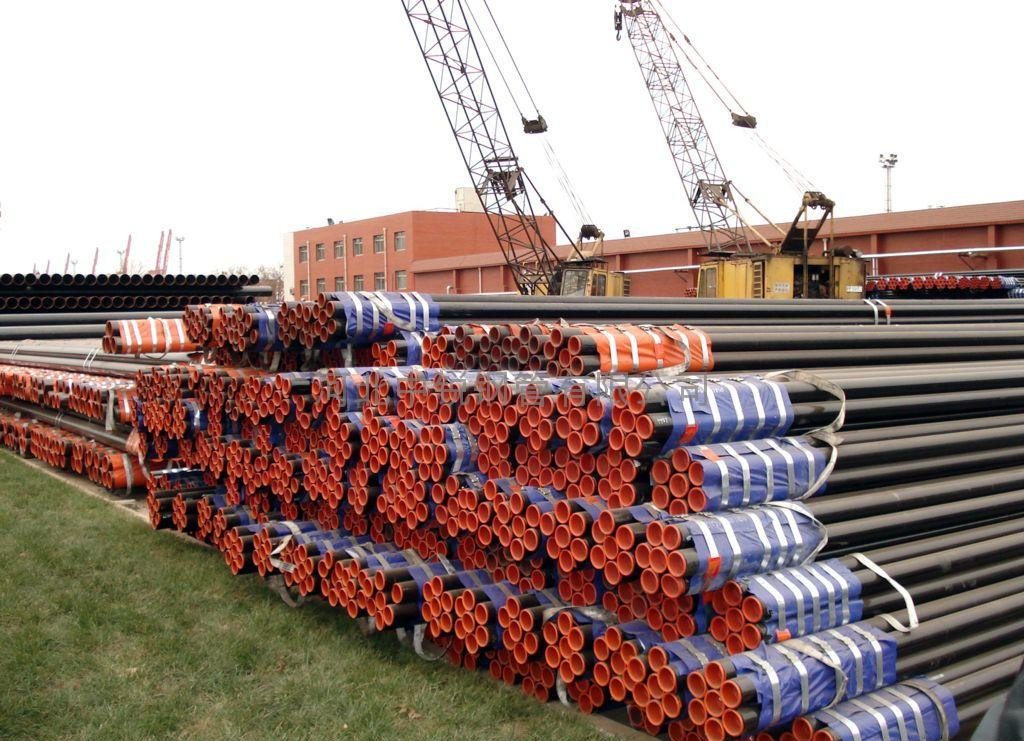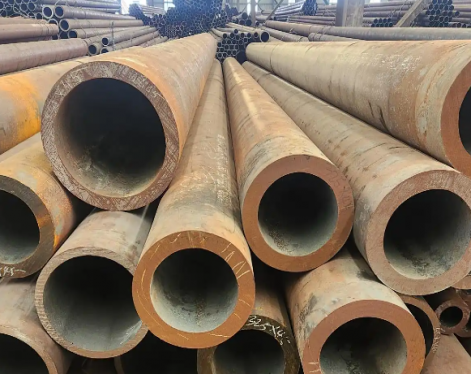The line pipe is a pipeline that transports the oil, gas or water extracted from the ground to the oil and gas industry enterprises through the line pipe. Line pipes include seamless pipes and welded pipes. The pipe ends include flat ends, threaded ends and socket ends; the connection methods are end welding, coupling connection, socket connection, etc.
Steel pipe tempering
Tempering is a heat treatment process in which the steel pipe is hardened and heated to a temperature below Ac1 (the starting temperature of pearlite to austenite transformation during heating), kept for a certain period of time, and then cooled to room temperature.
Tempering is generally followed by quenching, the purpose of which is to:
(a) Eliminate the residual stress generated when the steel pipe is quenched to prevent deformation and cracking;
(b) Adjust the hardness, strength, plasticity and toughness of the steel pipe to meet the performance requirements;
(c) Stabilize the structure and size to ensure the accuracy of the steel pipe;
(d) Improve and enhance processability. Therefore, tempering is the last important process for the steel pipe to obtain the desired properties. Through the combination of quenching and tempering, the required mechanical properties can be obtained.

Types of tempering
According to the different performance requirements of the pipeline steel pipe, according to the different tempering temperature, the tempering can be divided into the following types:
1. Low temperature tempering (150-250 ℃)
The structure obtained by low temperature tempering is tempered martensite. The purpose is to reduce the internal stress and brittleness of the quenched steel while maintaining the high hardness and wear resistance of the quenched steel, so as to avoid cracking or premature damage during use. It is mainly used for various high-carbon cutting tools, measuring tools, pipeline steel pipes, rolling bearings and carburized parts, etc. The hardness after tempering is generally HRC58-64.
2. Tempering at medium temperature (250-500℃)
The structure obtained by tempering at medium temperature is tempered troostite. Its purpose is to obtain high yield strength, elastic limit and high toughness. Therefore, it is mainly used for the treatment of various pipeline steel pipes and hot work dies, and the hardness after tempering is generally HRC35-50.
3. High temperature tempering (500-650 ℃)
The structure obtained by high temperature tempering is tempered sorbite. It is customary to combine the heat treatment of quenching and high temperature tempering as quenching and tempering treatment. Its purpose is to obtain comprehensive mechanical properties with good strength, hardness, plasticity and toughness. Therefore, it is widely used in important structural parts of automobiles, pipeline steel pipes, machine tools, etc., such as connecting rods, bolts, gears and shafts. The hardness after tempering is generally HB200-330.
Steel pipe tempering
Tempering is a heat treatment process in which the steel pipe is hardened and heated to a temperature below Ac1 (the starting temperature of pearlite to austenite transformation during heating), kept for a certain period of time, and then cooled to room temperature.
Tempering is generally followed by quenching, the purpose of which is to:
(a) Eliminate the residual stress generated when the steel pipe is quenched to prevent deformation and cracking;
(b) Adjust the hardness, strength, plasticity and toughness of the steel pipe to meet the performance requirements;
(c) Stabilize the structure and size to ensure the accuracy of the steel pipe;
(d) Improve and enhance processability. Therefore, tempering is the last important process for the steel pipe to obtain the desired properties. Through the combination of quenching and tempering, the required mechanical properties can be obtained.

Types of tempering
According to the different performance requirements of the pipeline steel pipe, according to the different tempering temperature, the tempering can be divided into the following types:
1. Low temperature tempering (150-250 ℃)
The structure obtained by low temperature tempering is tempered martensite. The purpose is to reduce the internal stress and brittleness of the quenched steel while maintaining the high hardness and wear resistance of the quenched steel, so as to avoid cracking or premature damage during use. It is mainly used for various high-carbon cutting tools, measuring tools, pipeline steel pipes, rolling bearings and carburized parts, etc. The hardness after tempering is generally HRC58-64.
2. Tempering at medium temperature (250-500℃)
The structure obtained by tempering at medium temperature is tempered troostite. Its purpose is to obtain high yield strength, elastic limit and high toughness. Therefore, it is mainly used for the treatment of various pipeline steel pipes and hot work dies, and the hardness after tempering is generally HRC35-50.
3. High temperature tempering (500-650 ℃)
The structure obtained by high temperature tempering is tempered sorbite. It is customary to combine the heat treatment of quenching and high temperature tempering as quenching and tempering treatment. Its purpose is to obtain comprehensive mechanical properties with good strength, hardness, plasticity and toughness. Therefore, it is widely used in important structural parts of automobiles, pipeline steel pipes, machine tools, etc., such as connecting rods, bolts, gears and shafts. The hardness after tempering is generally HB200-330.









